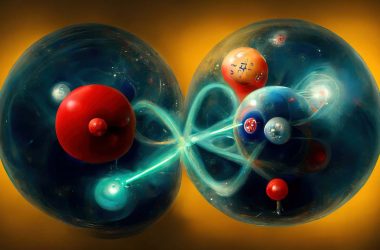Introduction
The standard model of particle physics is a comprehensive theory that explains the fundamental particles and forces in the universe. Traditionally, it has been represented as a simple grid showcasing the 17 basic particles. However, this conventional visualisation fails to capture the complex interactions and rules that govern these particles and forces.
The Limitations of the Conventional Grid
While the grid does provide an overview of three generations of quarks and leptons, as well as the bosons that mediate fundamental forces, it overlooks important aspects. For instance, it neglects the existence of two forms of handedness for most particles – right-handed and left-handed. Moreover, it doesn’t reveal which particles are influenced by specific forces.
Furthermore, the standard grid does not address certain mysteries, such as the absence of right-handed neutrinos. This incomplete depiction creates an illusion of a finished theory, when in reality, the standard model is a work in progress.
Chris Quigg, a theoretical physicist from the Fermi National Accelerator Laboratory, recognized the need for a fresh visualisation that reflects the intricate nature of the theory.
Introducing the Double Simplex
In 2005, Quigg proposed a new way to represent the standard model – the double simplex. This visualisation consists of two pyramids connected by the Higgs boson. Each pyramid vertex represents a different generation of particles, with one half representing left-handed particles and the other half representing right-handed particles.
The double simplex provides a more comprehensive and nuanced understanding of the standard model by incorporating the concept of handedness, which the conventional grid overlooks. By embracing the messiness inherent in the theory, the double simplex acknowledges that the standard model is an ongoing and evolving field of study.
Conclusion
The standard model of particle physics is a complex and ever-evolving theory that requires a more comprehensive visual representation. The double simplex offers a fresh perspective by incorporating the concept of handedness and acknowledging the incompleteness of the standard grid. By embracing the intricacies of the theory, physicists can continue to unravel the mysteries of the universe.








